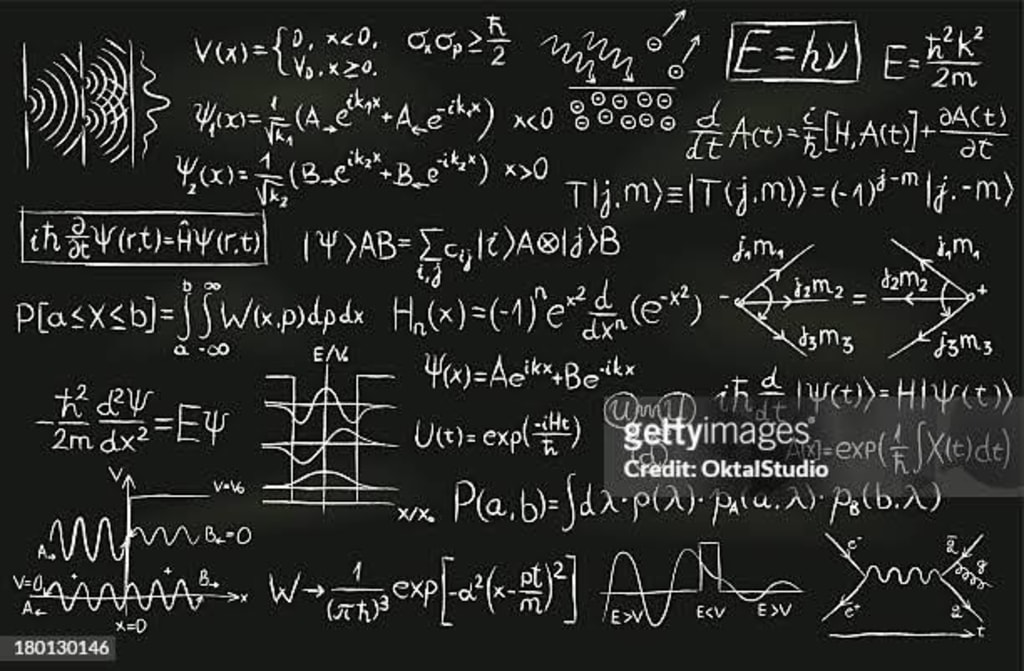
In the esoteric realm of quantum mechanics, where particles dance in probabilistic waves and uncertainty reigns supreme, even the mundane act of observing a screwdriver can become a bewildering journey into the depths of the quantum realm. Imagine, if you will, a quantum mechanic—a master of the subatomic world—armed with a toolbox of mathematical tools and a keen eye for the peculiarities of quantum phenomena.
Our quantum mechanic, let's call her Dr. Q, approaches the humble screwdriver with a mixture of curiosity and anticipation. Little does she know that this seemingly innocuous tool will become the focal point of an experiment that challenges the very fabric of reality itself.
As Dr. Q trains her quantum microscope on the screwdriver, she prepares to observe the elusive probability fields that envelop it. In the quantum realm, particles don't occupy fixed positions but instead exist in a state of superposition, where they can be in multiple places at once. These particles are described by probability distributions, which represent the likelihood of finding them in any given location.
The screwdriver, like all objects in the quantum world, is subject to these probabilistic laws. Its position and momentum are governed by wave functions that extend throughout space, creating a complex tapestry of potentialities. Dr. Q's task is to collapse these probability fields—to pin down the screwdriver's location and determine its trajectory with certainty.
But here's where things get interesting. According to the famous observer effect in quantum mechanics, the act of observation itself can alter the outcome of an experiment. When Dr. Q attempts to measure the screwdriver's position, her very presence influences the behavior of the particles, causing the probability fields to collapse into a single, definite outcome.
As Dr. Q watches intently, the screwdriver's quantum state collapses before her eyes. The fuzzy clouds of probability give way to a precise point in space-time, revealing the screwdriver's exact position with startling clarity. But in the process, something unexpected happens—the screwdriver's momentum becomes uncertain, its trajectory veering off in unpredictable directions.
Fascinated by this strange phenomenon, Dr. Q continues to observe, probing deeper into the mysteries of quantum reality. With each measurement, she uncovers new layers of complexity, each more baffling than the last. The screwdriver, once a simple tool of the trade, has become a gateway to a realm of infinite possibilities, where the rules of classical physics no longer apply.
As Dr. Q reflects on her experiment, she realizes the profound implications of her observations. In the quantum world, nothing is certain, and even the most basic assumptions about reality are called into question. And yet, amidst the chaos and uncertainty, there is beauty—a beauty that lies in the intricate dance of particles, the delicate balance of forces, and the boundless potentiality of the universe itself.
And so, with a newfound sense of wonder and awe, Dr. Q continues her exploration of the quantum realm, knowing that with each observation, she inches closer to unraveling the mysteries of existence itself. For in the world of quantum mechanics, the collapse of screwdriver probability fields is not just a scientific curiosity—it's a window into the very essence of reality.
As Dr. Q continues her observations, she begins to contemplate the philosophical implications of her work. The collapse of the screwdriver's probability fields raises profound questions about the nature of reality and the role of consciousness in shaping it. Are we, as observers, co-creators of the universe, influencing its behavior simply by observing it? Or are we merely passive spectators, peering into a reality that exists independently of our perception?
These questions lie at the heart of the longstanding debate between proponents of the Copenhagen interpretation of quantum mechanics, which posits that observation plays a fundamental role in determining reality, and those who advocate for alternative interpretations, such as the many-worlds interpretation or the pilot-wave theory.
For Dr. Q, these philosophical musings only deepen her fascination with the quantum realm. As she delves deeper into her research, she finds herself drawn to the mysterious interconnectedness of all things—the intricate web of relationships that binds the smallest particles to the vast expanse of the cosmos.
In the end, whether the collapse of screwdriver probability fields is a testament to the power of human consciousness or simply a quirk of quantum mechanics remains an open question. But for Dr. Q, the journey of discovery is far from over. Armed with her curiosity and her scientific rigor, she continues to push the boundaries of human knowledge, one observation at a time.
About the Creator
Enjoyed the story? Support the Creator.
Subscribe for free to receive all their stories in your feed. You could also pledge your support or give them a one-off tip, letting them know you appreciate their work.





Comments
There are no comments for this story
Be the first to respond and start the conversation.